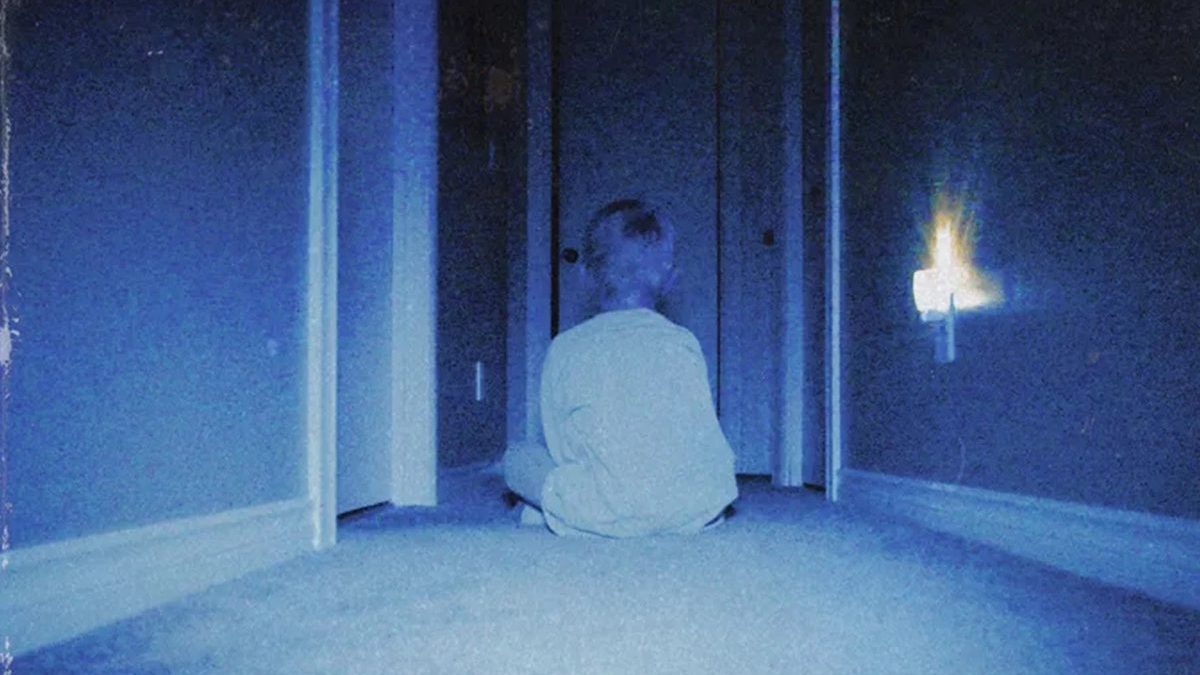The creak of a door in the dead of night, a voice growling in the dark when you thought you were alone, a sudden knocking at the door — this is the stuff of nightmares, and it is also the stuff of Skinamarink, the feature film debut from writer-director Kyle Edward Ball. It’s a slow, horrifying descent into childhood fear and an effective use of all the horrible things your imagination comes up with looking into the darkness of your hallway at 3am. Skinamarink is pure atmospheric horror, suffused with dread and even profound sadness, where a little goes a long way. It just might be the first great horror film released this year.
In 1995, siblings Kevin (Lucas Paul) and Kaylee (Dali Rose Tetreault) wake up in the middle of the night and realize two things: 1) their mother and father are nowhere to be found and 2) all the doors and windows in their house have vanished. With nothing else left to do, the pair decides to move their belongings into the living room, turn on the TV, and wait it out until someone comes to find them. Soon, it’s clear that no adult is coming to save them or make things normal again, but they’re certainly not alone. It’s a heart-wrenching, nerve-shredding premise that only escalates from here.
A word-of-mouth sensation that debuted at the Fantasia International Film Festival in Montreal last summer and then leaked online, Skinamarink delivers on the hype that’s been building up ever since. Ball had a budget of $15,000 for the film, which was mostly crowdfunded, and shot in his childhood home in Canada. The result is something that feels otherworldly, uncanny, and evil. Shot on digital cameras with low lighting, every frame looking out into the darkness of Kevin and Kaylee’s house is teeming with digital noise, daring your eyes to search and letting your imagination run wild with worst-case scenarios. While the film has little dialogue, there are stretches that are subtitled, which adds to the uncanniness of it all — like documentary footage we have no business watching. There are strange and unfamiliar shots of doorways and windows, rendering a home into a labyrinth of awful possibilities. Skinamarink takes the very visceral fears we all carry throughout childhood — the dark, being abandoned, being neglected — and heightens them to the point of hysteria.
The film takes its time getting there, but that’s the whole point. Skinamarink’s first stretches are slow and full of unsettling silence in between the glare and noise of the living room TV and the occasional exchange between siblings. This pacing and sound design is a way to build dread, of course, but it’s also a way to lull you into the unspoken rules of the house. The minute one sound is off, everything feels worse. Speaking of the sound design, it’s an excellent and necessary key to what makes Skinamarink so effective. Whether it’s cartoons repeating themselves ominously, low dialogue buzzing over a scene, or a jarring disruption of the movie, the sound forces you to lean in, invest, and eventually jump out of your seat. The visuals, full of digital noise, but also some of the most terrifying imagery I’ve seen in a film as of late, tie everything together. It all feels like something you’d stumble on during a late night online and deeply regret the next morning.
Skinamarink is worth seeing, preferably in the darkest, quietest room in your home, late at night (for maximum effect). It’s also worth seeing in a theater, where the terror can really wash over you. Thanks to IFC and Shudder, you’ll soon have both options available. If you have the patience and the nerve, Skinamarink is a horrible delight — a movie that’ll buzz around in your brain like a nightmare you can’t shake.
Skinamarink is in theaters now.
Fantastic
Skinaramink

